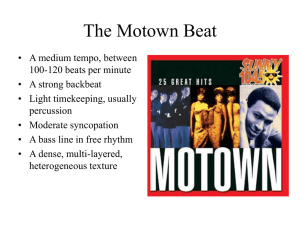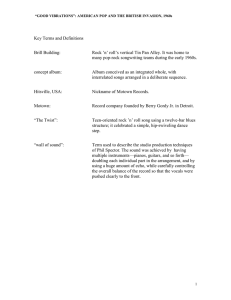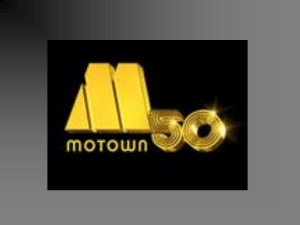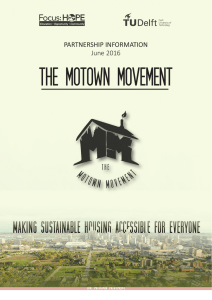The Motown Beat
advertisement
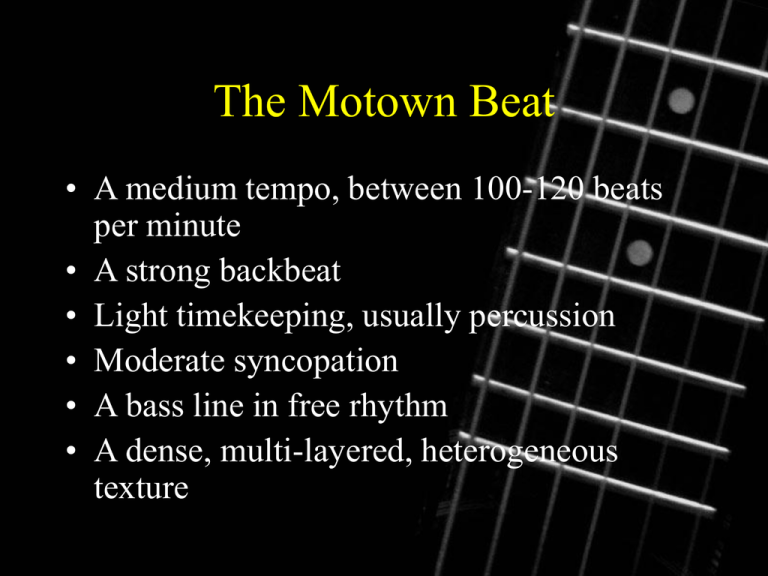
The Motown Beat • A medium tempo, between 100-120 beats per minute • A strong backbeat • Light timekeeping, usually percussion • Moderate syncopation • A bass line in free rhythm • A dense, multi-layered, heterogeneous texture Motown Melody • Riffs – Instrumental riffs tend to be shorter • Saturation Motown Harmony • Our experience with the Blues taught us three useful things about harmony – We hear harmonies from the bass up – I, IV and V are the three basic chords of the blues—and of early rock – The change from one chord to the next creates a rhythm Motown Instrumentation • A rhythm section contains three types of instruments – Bass instrument (stand-up or electric bass) – Chord instrument (guitar or piano) – Percussion instrument (drum kit, tambourine, etc.) Dynamics and Inflection • Dynamics refers to loudness and softness • Inflection is dynamic variation on a small scale, a stress of one note over another • Hierarchy – Vocal lines most prominent – Bass line and backbeat next loudest – All other lines in the background Texture • Texture is the relationship of different layers of musical activity Most common a) Melody b) A strong backbeat c) Light percussion Texture • Motown songs consist more of a set of preferences than a set of prescriptions • A persistent feature in Motown recordings is call and response Form • The form of the song amplifies and reinforces the verbal message • Mostly through the alternation of verse and refrain Summary of the Motown Sound • Light timekeeping (percussion and chord instruments) • Melodic saturation • Moderate syncopation • Rich instrumentation • Hierarchical dynamics • Dense, multilayered texture • Verse/Refrain forms that climax at title phrase Why is Motown So Influential? • A balance between melody and rhythm • Multiple points of entry (riffs and hooks) • A fresh new vocal sound close to mainstream taste • Instrumentation that appealed to a wideranging audience • Easy to follow forms
